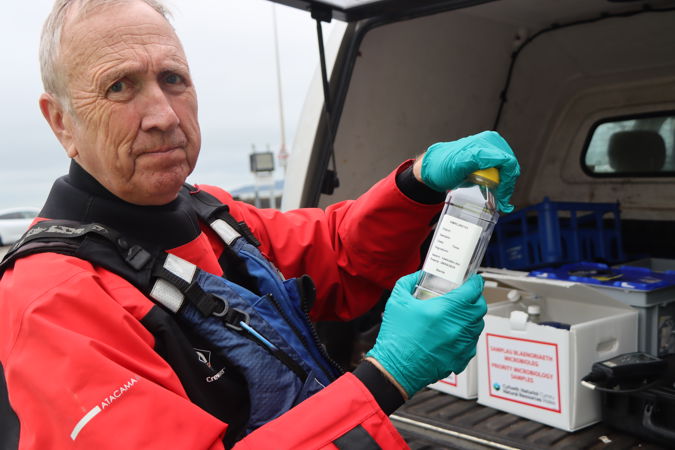Water quality sampling gets underway ahead of the bathing season

As warmer weather sets in and people across Wales plan visits to their favourite beaches and rivers, Natural Resources Wales (NRW) is beginning its annual programme of bathing water quality testing to help ensure these waters remain safe for public enjoyment.
This year, there are 112 designated bathing waters, which will be sampled multiple times between 15 May-30 September, in line with the Bathing Water Regulations 2013.
Last week, the Welsh Government announced that Lisvane and Llanishen reservoirs in Cardiff had been added to the list of designations, following a successful application.
Samples collected from designated sites are sent to NRW’s laboratory in Swansea, where they are tested for the presence of Escherichia coli (E. coli) and intestinal enterococci (IE)—key indicators of water quality and potential health risks.
Results from a four-year rolling period are then used to determine the classification for each site, as either; excellent, good, satisfactory or poor.
Last year, 98% of Wales’s designated bathing waters met stringent environmental standards, with 75 out of 110 sites meeting the ‘excellent’ criteria.
Ceri Davies, Interim Chief Executive Officer for Natural Resources Wales said:
More people than ever are discovering the joys and health benefits that open water swimming has to offer.
We know how important Wales’s bathing waters are to people and we remain firmly committed to ensuring our waters are clean, safe and protected for everyone to enjoy for generations to come.
Before the traditional start of the season, officers from NRW also carry out checks at bathing water sites to identify and address any obvious signs of pollution, and to ensure any permitted discharges are operating correctly.
Where last year’s results flagged any issues or deterioration, local teams conduct thorough investigations to identify and address potential sources of pollution.
Officers are continuing to take targeted action and work closely with Local Authorities and partners for both Ogmore-by-Sea and Rhyl Central, which received a poor classification last year, to investigate the reasons behind the failure and to work towards improving water quality.
Ceri added:
The vast majority of Wales’s coastal bathing waters continue to meet the top standards, which is great news for communities, tourism and the economy.
Improving water quality for the long term remains firmly at the top of our agenda and our teams continue to work hard to tackle the many sources of pollution which threaten our water quality, including from agriculture and storm overflows.
Much progress is being made, and after securing record levels of investment for the environment from water companies through the price review process, we will be pressing for investment in assets affecting our bathing waters, to safeguard their future health.
Wales blue waters are an amazing place to swim and we can all do our bit to help keep them special and preserve them for future generations:
- If you walk your dog on the beach (where permitted) clean up after your dog, leave only pawprints
- You can check for designated bathing waters through our bathing water explorer
- Short-term pollution forecasting is available at 16 bathing waters across Wales and updated in the bathing water profiles on our website. Please note Swansea Bay has a separate model and the predictions for this bathing water are only available via Swansea County Borough Council Website
- You can also check the DCWW’s storm overflow map, for near-real time information on storm overflow spills at designated bathing waters.
- If you enjoy wild swimming, read the safety advice at AdventureSmart, follow the Wild Swimming Code, and be sure to check, clean, dry before you leave
